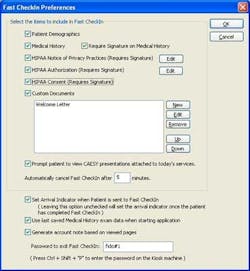First documented link between mother with pregnancy-associated gingivitis and death of fetus
Feb. 4, 2010
By Vicki Cheeseman, Associate Editor
DentistryIQ recently had the privilege of interviewing Dr. Yiping Han, a researcher from the Department of Periodontics at Case Western Reserve University School of Dental Medicine, who reported the first documented link between a mother with pregnancy-associated gingivitis and the death of her fetus.Click here to see the full findings from the February 2010 issue of Obstetrics & Gynecology.DentistryIQ: Please explain the significance of your lab work involving Fusobacterium nucleatum and preterm labor/stillbirths and the recent case of the 35-year-old mother who delivered a stillborn child in Santa Monica, Calif.Dr. Yiping Han: My lab has been working to understand the pathogenesis mechanism of Fusobacterium nucleatum for nearly 10 years. Our work encompasses basic science work on host-pathogen interactions, animal studies, to translational studies in humans. With regard to preterm birth and stillbirth, we first established a pregnant mouse model and showed that when oral F. nucleatum was injected into the bloodstream of the pregnant mice, it colonizes and proliferates in the placenta and causes localized, rather than systemic, infection and inflammation confined within the feto-placental unit leading to fetal death. This was a rather significant finding, because it showed that oral bacteria can translocate to the pregnant uterus through hematogenous transmission. As we know, transient bacteremia occurs during periodontal infections and treatments. This study indicates that transient bacteremia, if not controlled well, may have detrimental consequences. The recent case of the California mother who delivered a stillborn child provides the first direct human evidence in support of this hypothesis. The human case corroborated very well with what we observed in mice in terms of the likely duration of infection, pattern of infection, and birth outcome.DentistryIQ: How did you come across the case initially?Dr. Han: The patient’s friend contacted me via e-mail shortly after the stillbirth occurred. I have been contacted by patients or obstetricians regarding stillbirths or miscarriages caused by F. nucleatum both before and after this case. Unfortunately, in most cases, either the incidence occurred a while ago, thus no samples were saved for analysis, or it happened in a different country, which made sample collection difficult. I really want to thank this California patient and our wonderful team because had it not been for the patient’s prompt contact of me and total cooperation from her and everyone else, this study would not have been possible.DentistryIQ: In your opinion, explain how the baby died (i.e., discuss the transfer of bacteria and its flow throughout the body).Dr. Han: Based on our findings in the animals, I think this is likely how things happened: Since the patient reported excessive gingival bleeding during an otherwise easy pregnancy, yet only minimal gingival inflammation was found during postpartum examination, it was very likely she had pregnancy-associated gingivitis. The frequent bleeding suggested she might have had frequent transient bacteremia. Under normal healthy conditions, the immune systems would take care of those bacteria. Unfortunately, this patient came down with an upper respiratory infection, running a mild fever of 100F in the last three days leading up to the stillbirth. It was likely that the upper respiratory infection weakened her immune defense, providing a window of opportunity for the bacteria to escape to the placenta. Once the bacteria cross the endothelium lining and colonize in the placenta, the bacteria will proliferate quickly as the placenta is an immune-suppressed organ with minimal defense (otherwise the fetus, which is half foreign, would be rejected). As shown in the animals, fetal death was observed two to three days after F. nucleatum was injected into the bloodstream. The timeline in this human case corroborated perfectly with the observations in mice.DentistryIQ: What are other systemic effects that you may be researching in the future?Dr. Han: Besides intrauterine infection and adverse pregnancy outcome, we are also studying the implication of oral bacteria in arthritis and other systemic infections.DentistryIQ: Were you interested in the oral-systemic link before you heard about this case?Dr. Han: I have a long-standing interest in the oral-systemic link and my lab has published extensively on this topic.DentistryIQ: Dr. Han, thank you for your time …Click here to read the article titled "First Oral Bacteria Found Linking a Mother and Her Stillborn Baby" recently published in Science Daily.







